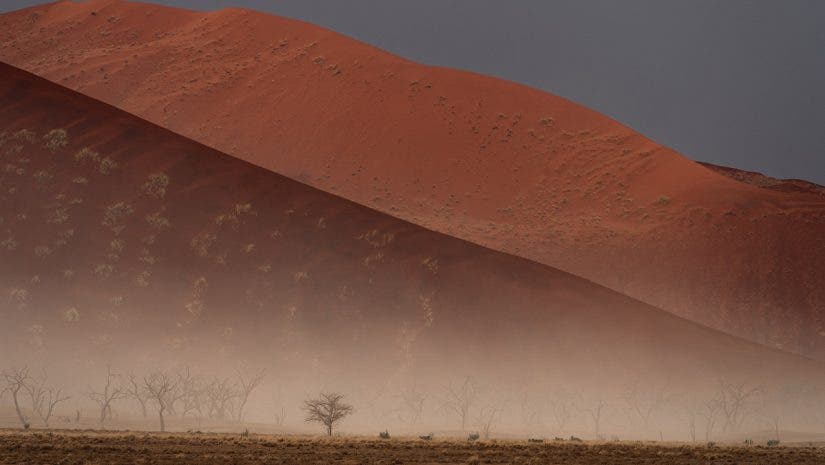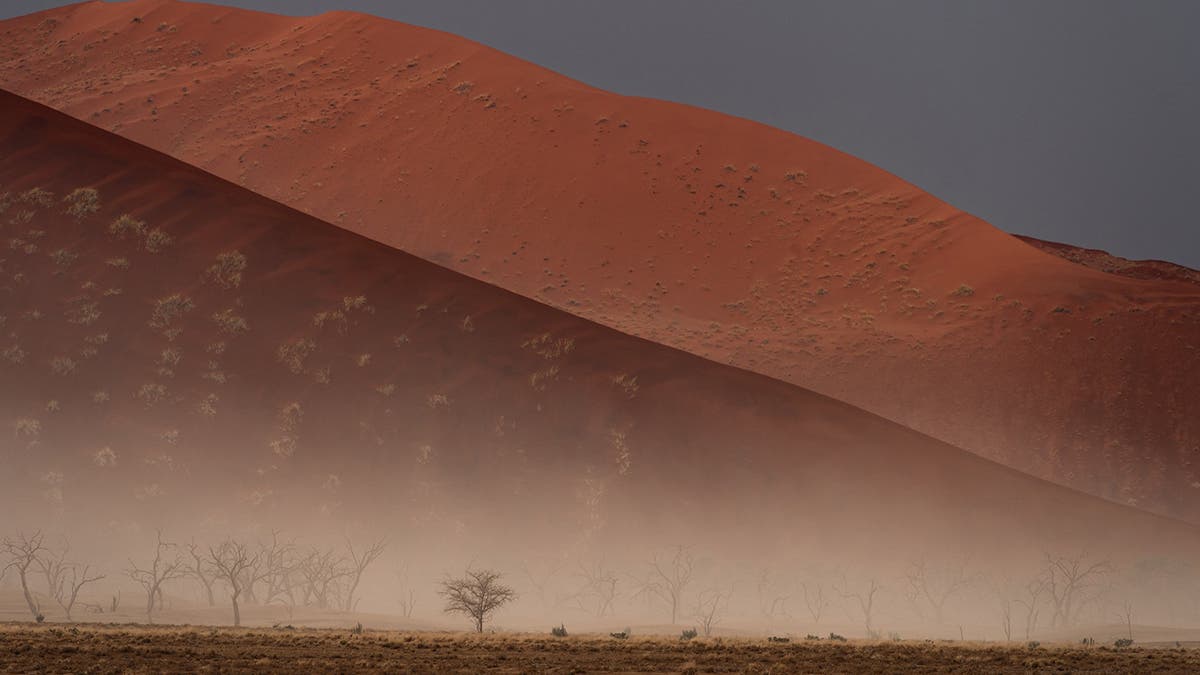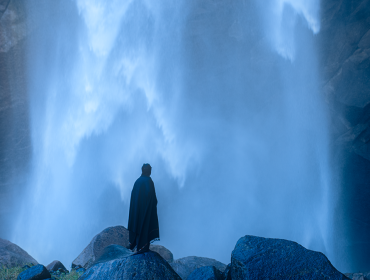“What are you wanting to capture, Muji?” My friend’s question woke me at Sessrim National Park in Namibia before dawn. We had arrived late at our campsite and spent half the first half of our night seeking refuge in the reserve’s shower rooms. This was because we only braved setting up our tents after an electric storm had calmed down. For this exploration of desert photography, I had high hopes. However, they were balanced with a bit of doubt.
“I am hoping to capture the texture and patterns of the sand in this early light. The NamibRand dunes are like they are from another planet, but if the lighting is poor, everything will fall flat and dull,” I replied.
The Quiet Magic of Life in the Desert
Since we hadn’t scouted the area beforehand, we walked on foot toward the nearest sand dune, hoping for something extraordinary. It was indeed a surprise; my first introduction to the desert brought me the quiet magic of life in the desert. The dried mud cracks had borne life to fresh new greenery, and in the far distance was a tree apparently thriving in the mineral-rich sand. Home to many insects and a shelter for animals, the sturdy green tree must have stood there for many years, resisting the region’s extreme climate changes. That same sand blows into the oceans and provides food for marine life; thus, the life cycle continues, giving sustenance to everyone.
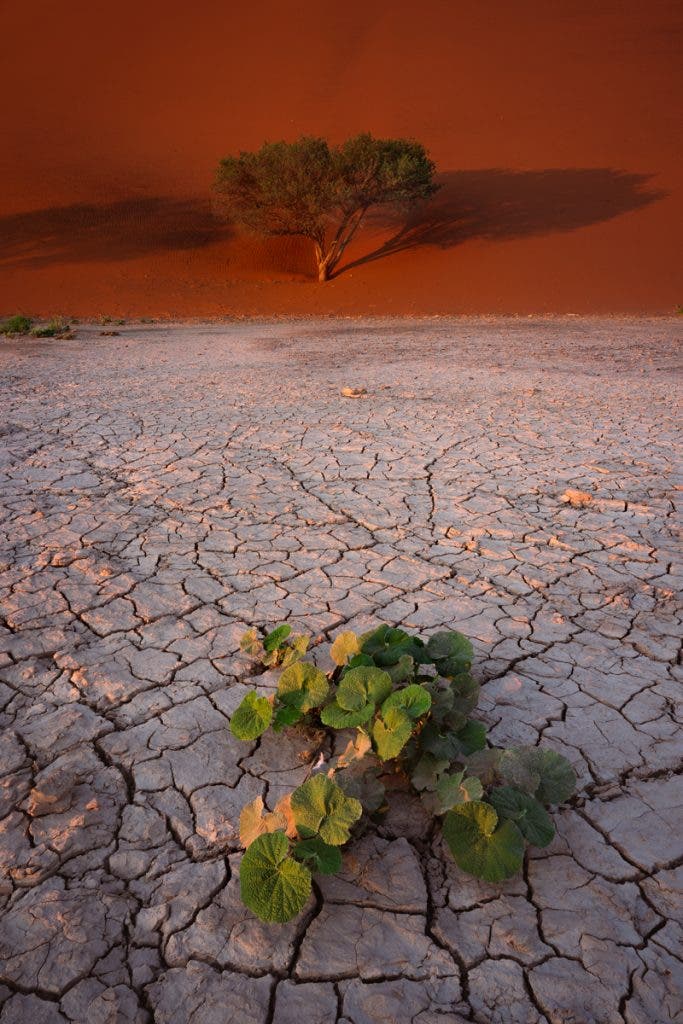
Travel, specifically for photography, in remote and harsh climes, brings its own set of challenges and requirements. These include planning food and water, as well as fuel and power supply considerations. Not to mention living outdoors in unpredictable weather, off the grid. However, this deserves a discussion all on its own and is not in the scope of this particular article.
Instead, I would like to share with you some tips for the unique experience of photographing the desert and for capturing landscapes that truly showcase its beauty.
The Best Time for Desert Photography
The light and shadows move all day long, creating contrast and enhancing the patterns of the sand. So, set aside the clichéd advice of capturing landscapes during golden hour and use the full day to your advantage. Your time there is precious.
The photo below was taken with the sun almost directly overhead, with only my southern latitude allowing for some shadows to be cast.
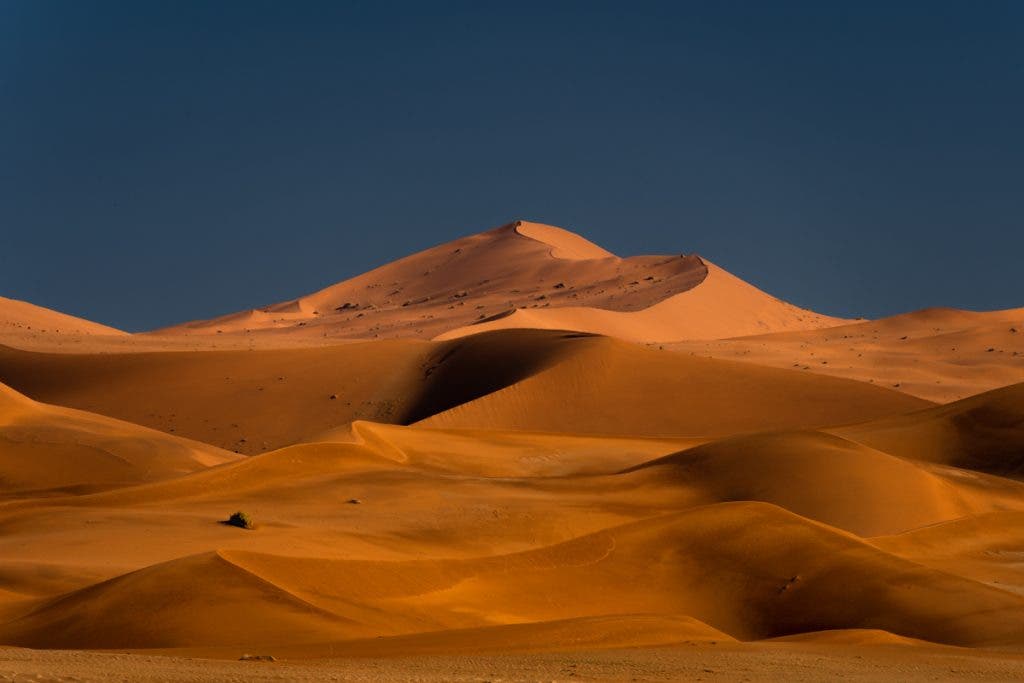
Have a look at the image below. The tan on my hands from the harsh sunlight still hasn’t left years later. However, the image is a memorable one taken during the scorching midday while a storm had just begun to brew in the sky. The colors and the contrast are no less dramatic than shooting a scene at sunset.
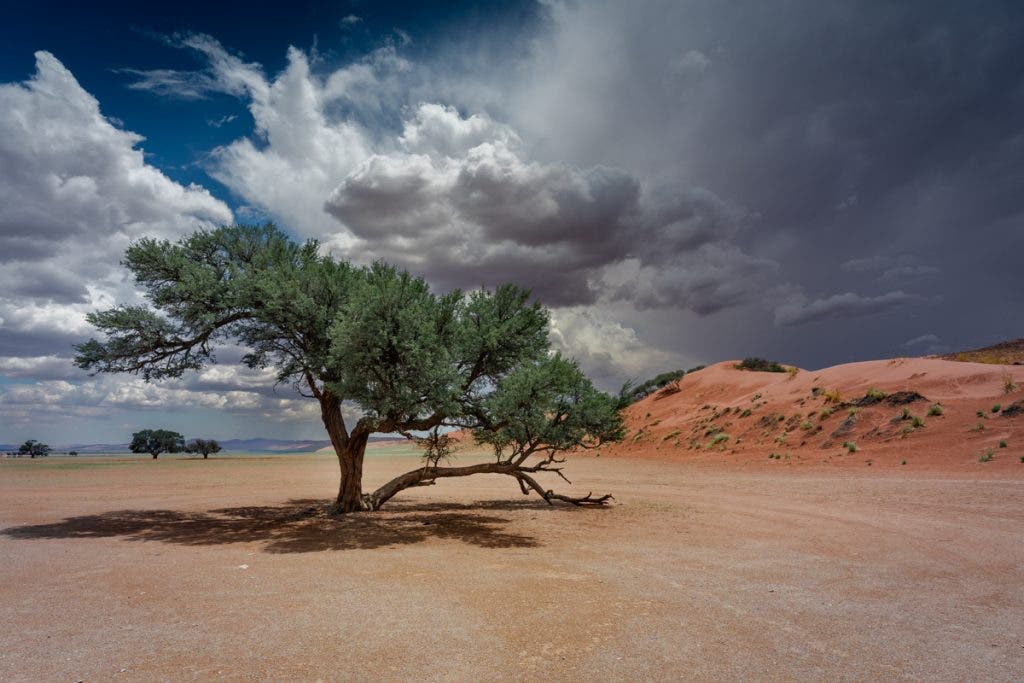
There IS no best time. All opportunities are to be seized.
What to Look For
The advice I shared with my friend at the beginning of this article encapsulates the essence of desert photography: texture, patterns, contrast, and light. Look for these while doing research on location and planning your route. Remember, contrast isn’t just about color; it can reveal unexpected elements, as seen in images like the Spirit of the Desert—a small plant persevering amidst the stark mud cracks—or a vibrant green tree standing tall in the arid expanse. Embrace these moments, and let them inspire your creativity.
Look for the elements mentioned above, know the direction of sunrise and sunset, keep an eye on the weather, and keep your fingers crossed. Protect yourself from the sun by using sunscreen, covering your body, carrying an adequate supply of water, snacks, a pair of sunglasses, and a means of tracking your whereabouts. Most importantly, experience the joy of exploring the dunes.
Bringing it Together in Desert Photography
Beautiful photos need a combination of location and composition, in addition, of course, to technical skill.
Would you believe me if I told you that the three photos below were taken a few meters apart? The three photos result from careful planning, scouting, identifying the right elements in the desert, knowledge of weather patterns, and experience with camera gear, techniques, and settings – plus a little bit of luck!
Sunrise Magic
The foreground in the following image is a sand dune with patterns that lead you to the middle ground, where the shapes of these African trees captivate your attention for a few seconds before you admire the mountains and a vibrant sunrise. The sky occupies one-third, while the foreground and middle ground make up two-thirds of the scene. The sand dune would have been dull if it weren’t for the soft glow of light before the sun peeked through the mountains. When scouting, watch where you walk because you don’t want to ruin a potential composition and leave footprints. If you have any, remove them using Photoshop unless you feel they add to the image’s character.
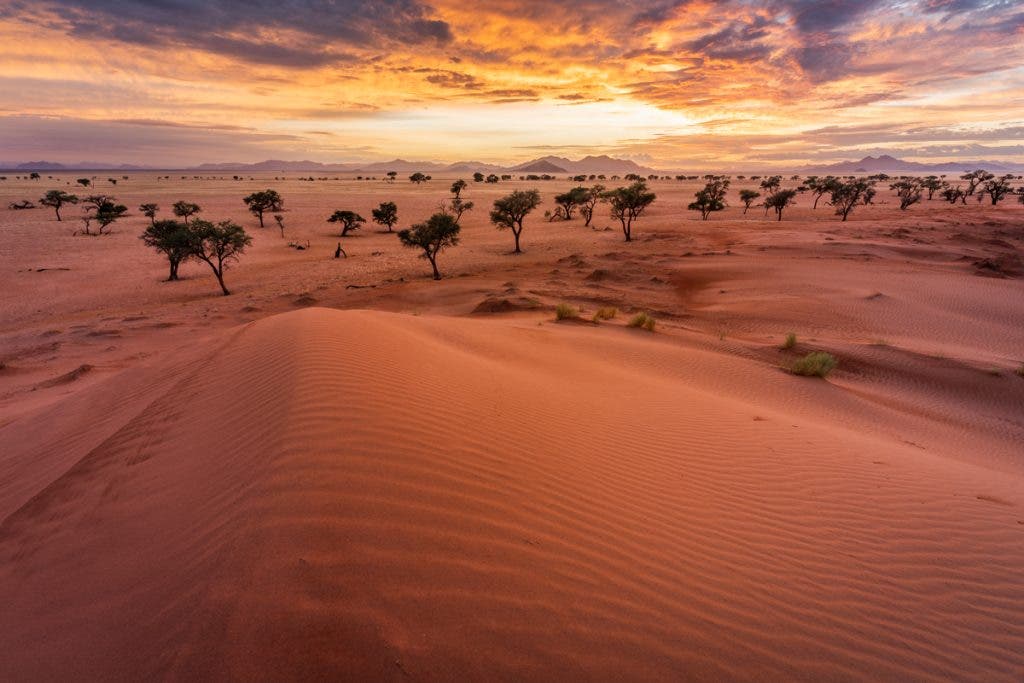
Rainbow in the Desert
A few meters away from the sunrise, we set our tripods for a sunset in the opposite direction later that afternoon. Towards our backs, from where the sun rose, a massive storm started brewing, and my friend said to me, ‘We have our sunset location secured. Pay attention to the storm and find a composition because with the raindrops hanging in the air, we might get lucky with a rainbow. It’s something I would have never imagined in my dreams, and we screamed for joy. Again, I want you to note the composition, which comprises all the elements of texture, patterns, and contrast that we are seeking to enjoy. The light was gloomy and made the scene quite dramatic.

Caption: The unexpected surprise
A Fiery Sunset
Scant minutes later, it felt as though the mountain was on fire. The light gleamed across the entire landscape.
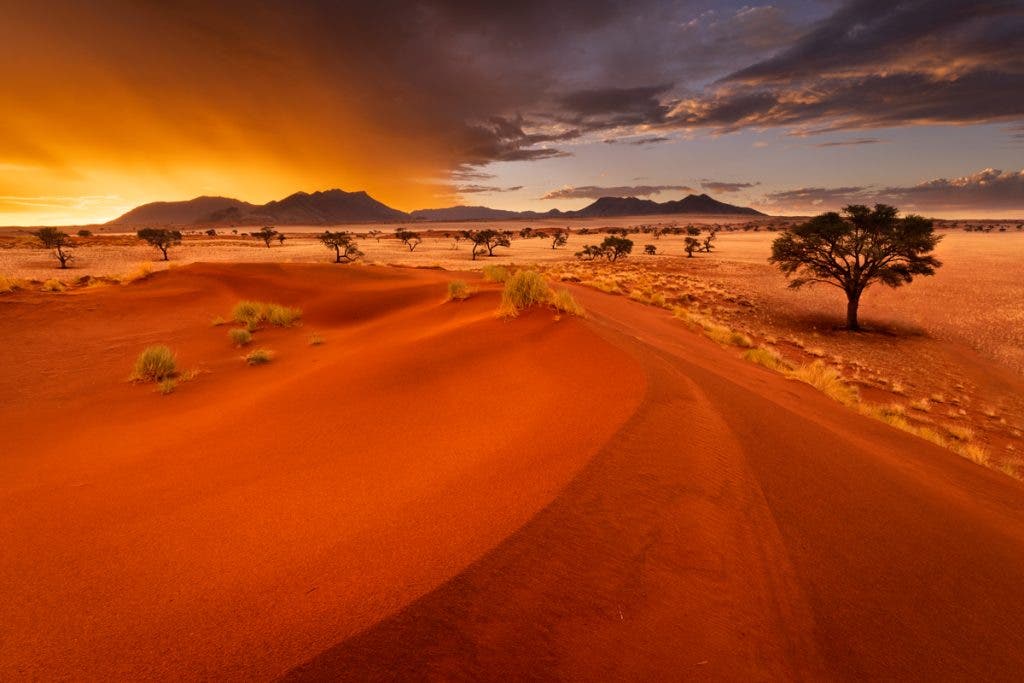
And What if You Are Not in Luck?
Of course, the weather is not in your control, but it shouldn’t stop you from taking intimate close-up shots as below.
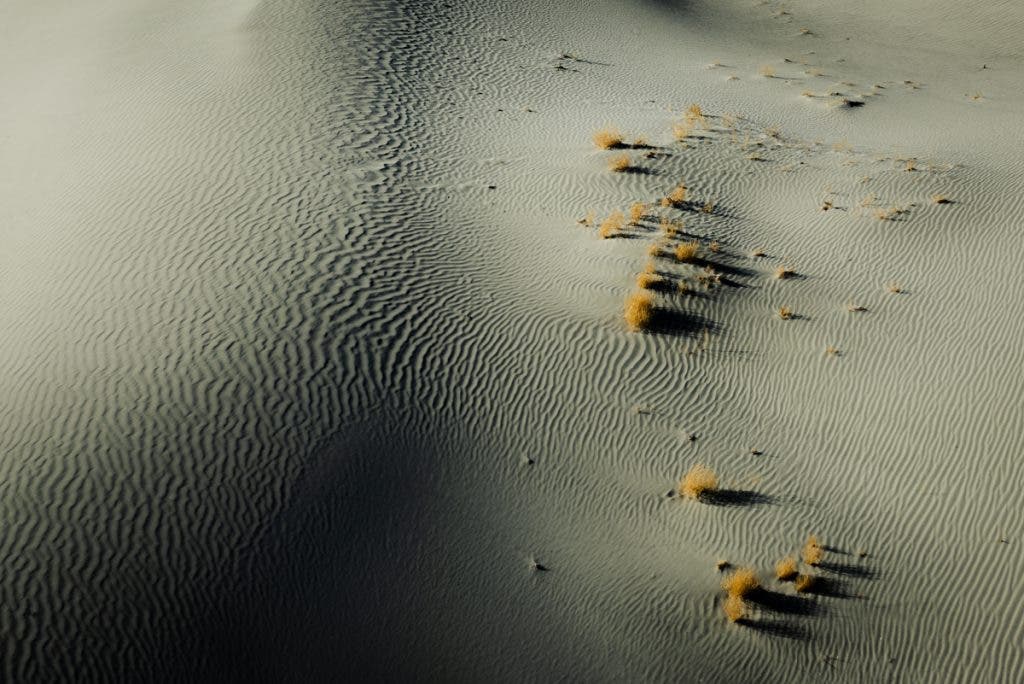
Do not underestimate the value of post-processing, which is the phase where an image truly evolves and reaches its full potential. Boost contrast in areas needing depth to enhance details and textures. Adjust saturation levels of sand and other elements to either intensify or soften hues. Finally, assess the image as a whole to ensure a balanced and visually pleasing result.
Equipment Consideration: Sand, Sand Everywhere
In addition to the obvious camera gear requirements for landscape photography, there must be specific considerations for desert photography. Sand damage to your camera, lenses, and filters is a real problem, and the wind blows it into crevices you cannot imagine.
- Keep a few microfiber cloths for lens cleaning. Be aware that in this environment, you first blow the sand off the filters and lens to prevent scratching the glass.
- Invest in a weather-sealed camera bag to protect your gear from sand and moisture that occurs at night.
- Bring a sensor cleaning kit, as sand can get in when you change lenses on location.
- The tripod sinks into the sand, so keep an eye on your camera’s levels before taking shots, especially long-time-lapses. Needless to say, invest in a sturdy tripod.
- Since you’re away in the desert, bring your essential tech, like power banks and backup devices.
Lastly, bring plenty of water, sunscreen, and a first aid kit to ensure your comfort and safety during your photography adventures.
Conclusion
Since visiting a desert may not be an everyday occurrence, proper preparation is essential for maximizing your experience. You are navigating a harsh environment, far from civilization, with untouched beauty, but the high input equates to a high return for your efforts.
